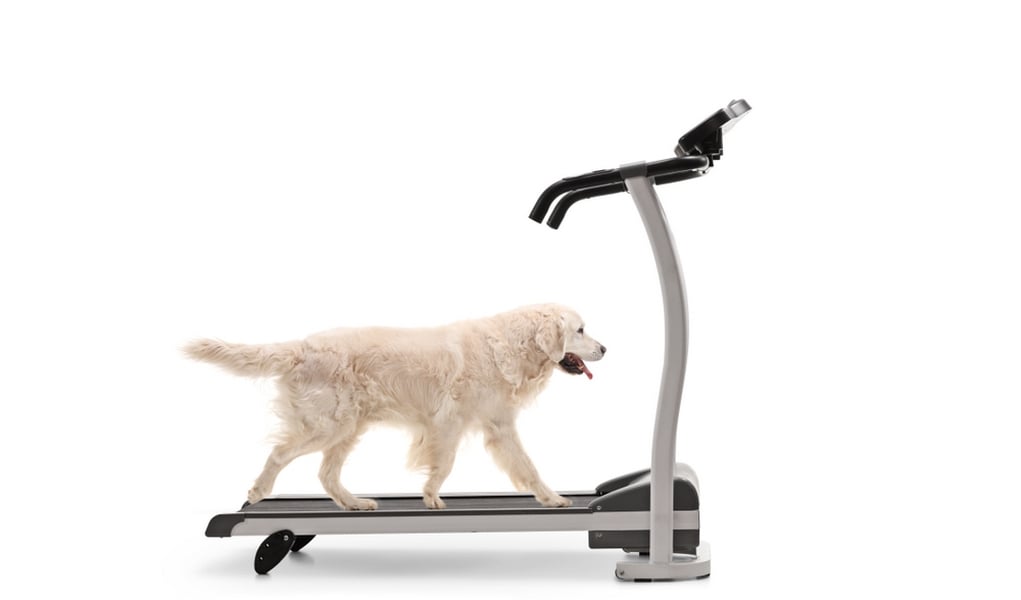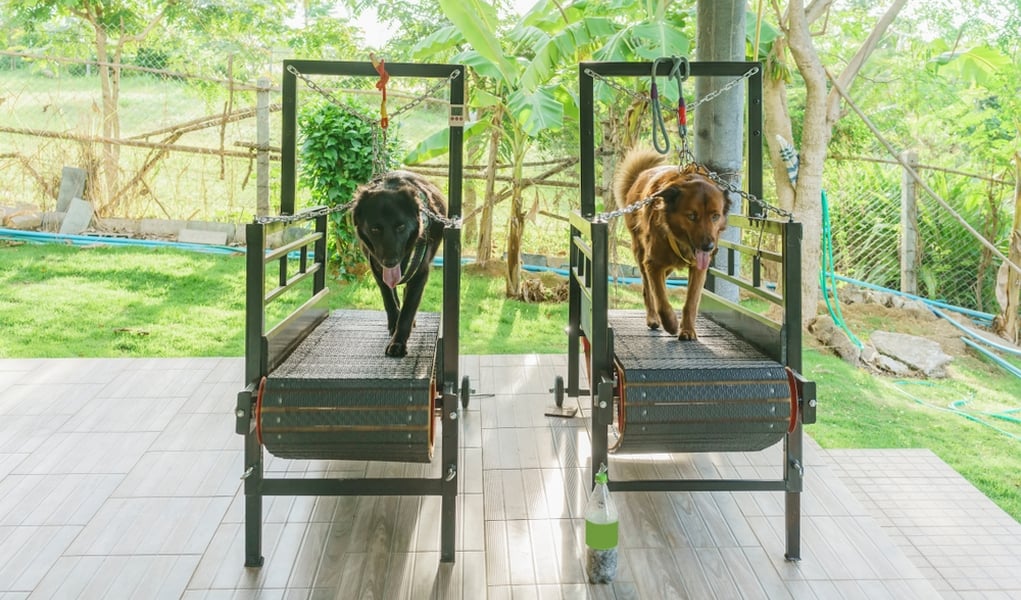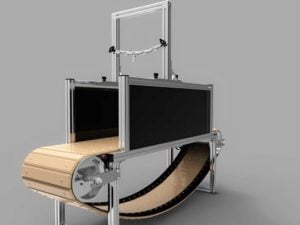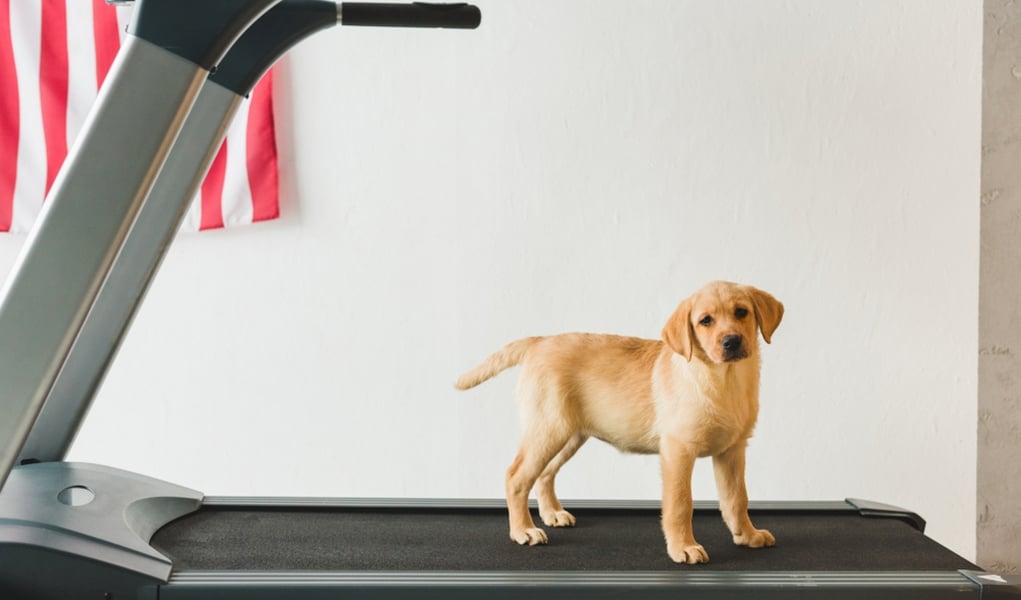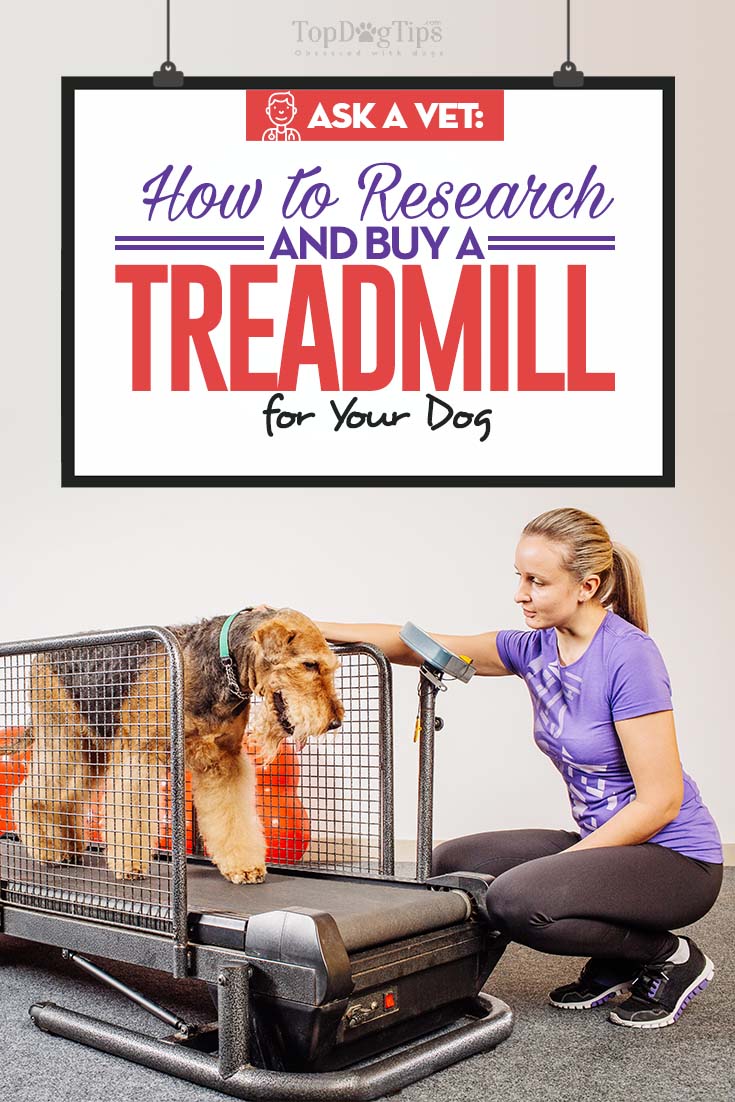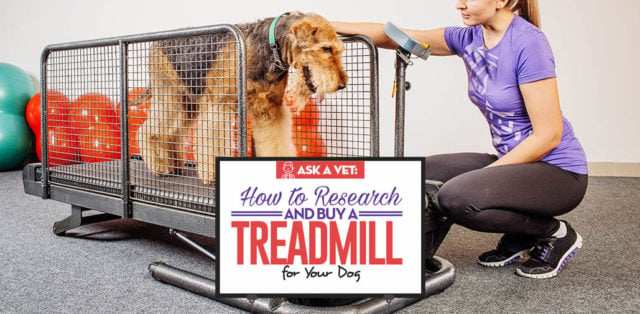
Table of Contents
Many puppy parents wonder how they can exercise the family dog more frequently or more efficiently.
Taking walks or playing outdoors may be difficult or impossible due to tight schedules, bad weather, unfavorable climate, or even physical limitations.
Luckily, having a treadmill for dogs will aid in keeping your dog as fit as possible in the comfort of your own home.
In my practice, I occasionally encounter pet owners who are curious about the use of treadmills for dogs but aren't sure if there are any benefits to that and if some of them are worth their (high) cost.
The general consensus is that veterinarians are very much pro the use of treadmills for dogs — there are many great benefits that can be achieved to prevent future and deal with current health conditions in your canine.
Before you buy a treadmill for dogs, however, there are a few things you need to keep in mind. There are two general types of treadmills that are available for pet owners: underwater and indoor dog treadmills.
Underwater dog treadmills are used by canine rehabilitators and physiotherapists.
These large, expensive treadmills are typically not practical for use in homes and would be quite expensive.
Dogs that require the use of an underwater treadmill often only use it for physiotherapy sessions short-term.
Studies have proven the many benefits of underwater treadmills for dogs. It's also one of the most effective ways to relieve pain and arthritis discomfort in dogs.
Indoor dog treadmills are electric or “dog-powered,” compact, and perfect for almost every size.
They look like miniature versions of human treadmills, which we're all familiar with.
Some pet parents even exercise alongside their pup on their own home treadmill or elliptical machine.
Regular dog treadmills have also been scientifically tested with canines, and some studies found them to be of great benefit to dogs (study).
In this article, I will discuss mostly the regular type of dog treadmills since it's the one most pet owners are likely to purchase.
A dog treadmill will typically have unique features such as a belt running surface, water bowl stand, treat basket stand, and side panels.
An electric motor powers many, while others run off the movement of your dog. Some doggy treadmills are designed like a large rodent wheel.
RANKINGS: Top 11 Best Dog Treadmill Choices for Exercise and Recovery
Treadmill for Dogs
the vet’s buying guide for pet owners
Why Do You Even Need a Treadmill for Dogs?
Every dog owner has their own reason for buying a treadmill, but general physical fitness and well-being always play a part.
If you live in an area with harsh winters, long monsoon seasons, or intense heat — the treadmill can be a godsend.
You and your dog can stay indoors and exercise in the comfort of your own home.
There are a wide variety of reasons to get a treadmill for dogs, including:
- high energy
- behavior issues (including anxiety)
- obesity
- continuation of physiotherapy
- post-operative recovery
- conditioning after a long illness or fracture repair
- conditioning working dogs or dogs that compete in competitions
- low-impact exercise for:
- dogs with arthritis
- geriatric dogs
- dogs with neurological diseases
High-Energy Dogs
It is worthwhile noting that certain popular breeds are VERY high-energy, especially dogs in herding or sporting groups.
Sometimes, these dogs don’t mix well with indoor or urban lifestyles without appropriate amounts of exercise.
 Border collies are a prime example. These dogs were bred to run a lot, and they were very smart. They require a lot of exercise to keep their minds and bodies healthy.
Border collies are a prime example. These dogs were bred to run a lot, and they were very smart. They require a lot of exercise to keep their minds and bodies healthy.
Border collies can get bored easily if they are indoor pets without a lot of room.
Boredom can lead to behavior problems.
If you’re unable to get out and let your Border run every day or engage in another physical activity – like agility – a treadmill may be the best option.
While almost any dog can benefit from exercise on a treadmill, owners of high-energy breeds like these should especially consider the investment:
- Border Collie
- Jack Russell Terrier
- Australian Shepherd
- Golden Retriever
- Boykin Spaniel
- English Springer Spaniel
- Pointer
- Weimaraner
- Siberian Husky
- Airedale Terrier
- Blue Heeler
- Catahoula Leopard Dog
- Irish Setter
Obesity and Weight Loss
The ‘Obesity Epidemic’ is causing significant health issues for dogs and cats.
In 2015, it was estimated that 54% of dogs in the U.S. were considered overweight or obese.
To prevent obesity-related diseases, exercise, and diet control are necessary.
The majority of successful weight loss in pets is due to diet restriction or change.
Incorporating regular, gentle exercise can help to tone muscles, support joint health, and burn calories.
Treadmills are an excellent option for dog owners who wish to accelerate their pet’s weight loss.
RELATED: 8 Evidence-based Ways to Deal with a Hyperactive Dog
Which Treadmill for Dogs Should You Choose?
There are several treadmills on the market today.
Top Dog Tips experts have previously researched and made a list of the best dog treadmills out there.
You can use that list or take a look at my personal review of several common designs and compare them with your specific needs.
Some require electricity to run the motor, while others are propelled by the dog.
It is worthwhile to take note of the different construction materials, sizes, storage options, and extra features before making your purchase.
5 Top-Selling Treadmills for Dogs
Here are 5 of the top-selling treadmills for dogs on the market:
1. Dog Trotter “Classic” Trotter
If you are interested in an inexpensive, basic treadmill, this is it.
In the late 1980s, the Classic was developed as one of the first dog treadmills in the USA.
It is quite simple in its functions and design but is durable and long-lasting.
- Inexpensive
- Basic design
- Free-spinning track
- Does not require electricity
- Easy to clean
- Attachment points for the leash
- Wooden or composite track
- 90-day warranty on all parts and labor
- Comes fully assembled
- Small, Medium, Large, and Extra Large sizes are available
2. Mini Pacer Treadmill
Designed for small to medium-sized dogs, this compact, affordable treadmill for dogs design is perfect for canines under 55 pounds.
Because of its price tag, this is one of the more popular dog treadmills among pet owners and has been well-reviewed in the Top Dog Tips' rankings list.
- Designed for small spaces
- Electric motor – 110V
- Portable
- 0.5-7.0 mph settings
- The unit weighs under 50 pounds
- Flexible, removable side panels
- Emergency cut-off switch
- Foldable for easy storage
- It can be used in 220V, but this will void the warranty
3. Dog Trotter Standard Pro Trotter
Another treadmill design from this company is because Dog Trotter treadmills have an excellent reputation among veterinarians.
Like the “Classic,” the Standard Pro Trotter is a similar design but with added features.
It is a great option for those who want a simple free-spinning treadmill with a few “whistles and bells.”
Highlights:
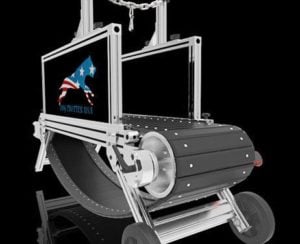 Free Spinning Track
Free Spinning Track- Attachment points for the leash
- Anti-skid surface
- Braking mechanism
- Does not require electricity
- 12-function digital speedometer
- Removable side panels
- Clear plexiglass sides (optional)
- Rear limb supporter (optional)
- 1-year warranty on all parts and labor
- Comes fully assembled
4. Go Pet Treadwheel
The Treadwheel is basically an extra-large rodent wheel for dogs. This treadmill for dogs offers a brilliant design that allows your dog to propel himself without the need for an electric motor.
It's another popular choice among pet owners but has its downsides in terms of weird positioning and not being the most reliable brand out there.
- Lightweight
- It can be used indoors or outdoor
- Sizes available to fit almost every breed
- Easy to clean
- Cushioned mat running surface
- Brake
- Odometer
- Plastic and steel or solid steel construction
- Training door for easy access
5. Dog Tread Treadmills – Diagnostic Treadmills
Dog Tread is another manufacturer of canine treadmills with an excellent reputation for customer service.
They make a wide variety of sizes to fit your pet, as well as special diagnostic treadmills.
If your dog is an avid athlete, investing in a diagnostic treadmill may be worthwhile.
The stride and lameness evaluation data collected by these treadmills are useful for conditioning purposes and sports injury rehabilitation.
Highlights:
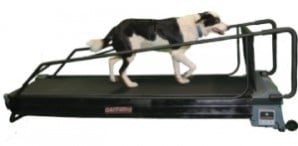 Models to fit toy, small, medium, large and extra-large breeds
Models to fit toy, small, medium, large and extra-large breeds- Quiet electric motor
- Removable side panels
- Treat basket
- Space for the water bowl
- Remote control access
- Easy to clean
- 2+ year warranty
- Options like cameras, software, sensors
How to Train a Dog to Use a Treadmill
Do:
- Follow instructions set by the manufacturer.
- Follow instructions established by your veterinarian or rehabilitation specialist.
- Be in touch with your veterinarian or rehabilitation specialist if the treadmill is being used for weight loss or physiotherapy purposes.
- Ensure that your dog can walk obediently on a leash.
- Use a harness while on the treadmill to provide support in case they stumble or fall.
- Walk alongside your dog, holding the leash, encouraging him.
- Use the side panels to prevent stepping off the side.
- If your pet requires the use of a sling, use it while on the treadmill for dogs.
- Use lots of treats for training (positive reinforcement).
- Offer water frequently.
- Start slowly, with 2-3 minute sessions at first.
- If your pet is afraid, stop the session and give lots of treats. Slowly start again, rewarding his progress every step of the way.
- Pay attention to your pet’s level of fatigue. Fatigue can predispose your dog to trips and falls.
- Some models allow for a “quick release” lead tie to be used to help keep your dog on the treadmill. Use these with caution and only according to the manufacturer’s instructions.
Don't:
- Use a loud voice during training sessions. If your dog hesitates, is fearful, or trips – using a loud voice can create fear, even if you aren’t scolding him.
- Tie your pet’s collar to the treadmill, as a fall could lead to strangulation.
- Start too fast.
- Leave your pet alone on the treadmill.
- Use negative reinforcement (punishment).
- Increase the incline of the treadmill for dogs inclines too fast.
It is likely that your pet will become fast friends with their treadmill for dogs.
This wise investment in your dog’s health can be used for years to come, even alongside your own treadmill.
READ NEXT: 7 Ways To Turn Daily Activities Into Exercise for Dogs
Disclosure: We may earn affiliate commissions at no cost to you from the links on this page. This did not affect our assessment of products. Read more here and find full disclosure here.


